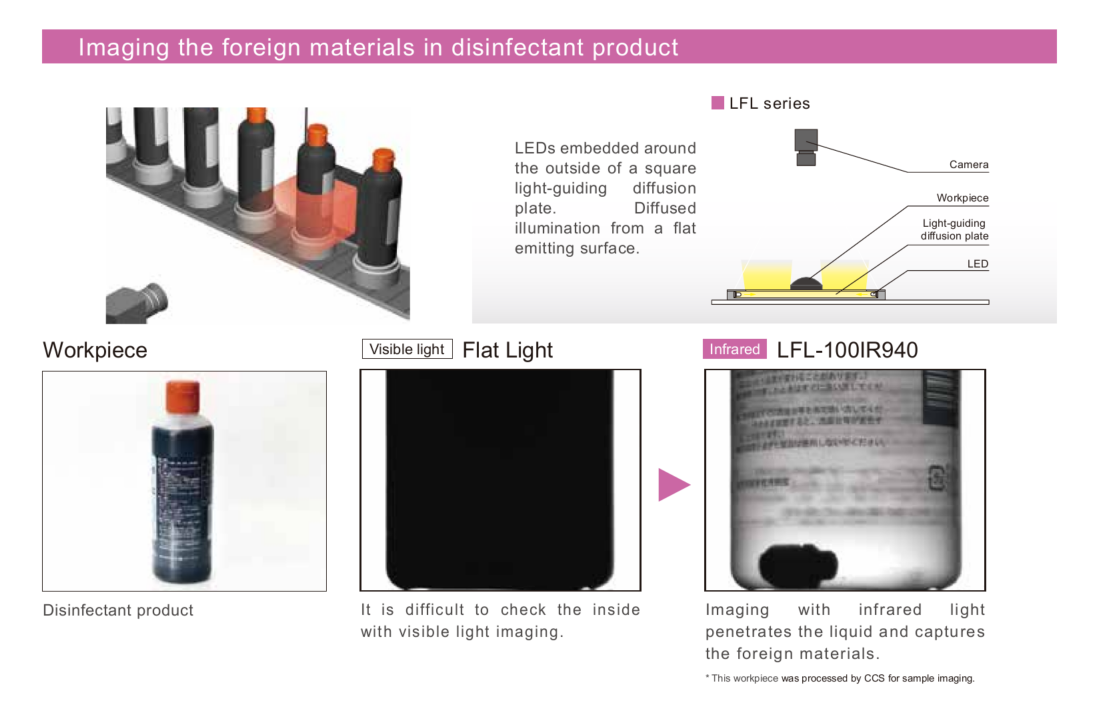
| Volume Pricing | |
|---|---|
| Qty 1+ | S$1,189.00 each |
| Need More? | Request Quote |
CCS Infrared (IR) Bar Lights provide uniform infrared illumination along a localized area. Designed with a compact lightweight housing, these bar lights can be easily integrated into applications with a limited working area. CCS Infrared (IR) Bar Lights are ideal for a variety of testing and inspection applications in industrial and manufacturing environments such as foreign material detection, color reduction in monochromatic images, and character isolation for optical character recognition (OCR). These bar lights are available as a single bar light or as a 4-bar square configuration with both options featuring adjustable output angles. Compared to visible light, infrared light provides a lower scattering rate and a higher transmittance rate, allowing for fewer surface reflections and deeper penetration into materials for imaging.

or view regional numbers
QUOTE TOOL
enter stock numbers to begin
Copyright 2024, Edmund Optics Singapore Pte. Ltd, 18 Woodlands Loop #04-00, Singapore 738100
California Consumer Privacy Acts (CCPA): Do Not Sell or Share My Personal Information
California Transparency in Supply Chains Act
The FUTURE Depends On Optics®